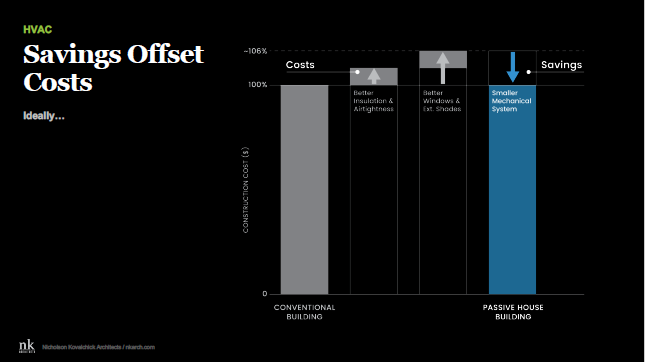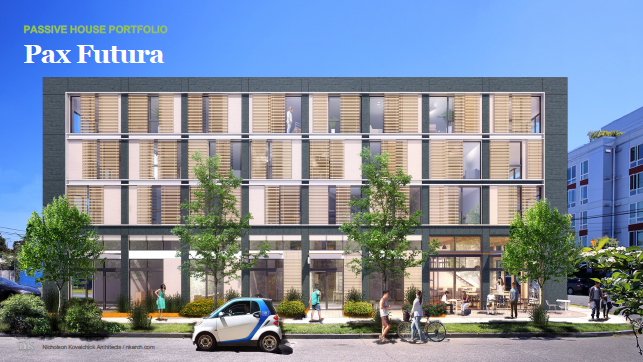Inspiration can be found anywhere: a poetry verse, a pithy comment a friend says, on the radio driving in our car, or an inanimate object as we just walk down the street. Well, a walk down the streets of Columbia City is where I found this week’s Moment of Inspiration. The small, funky and eclectic enclave of Seattle, Columbia City, is not immune to the building craze that has dominated the local landscape. But it’s here that we find Pax Futura by Cascade Built, the first Passive House apartment building in the state of Washington. Passive House building is all the rage right now. And no, it’s not a dig at the famed passive aggressive culture in Seattle, or the Seattle Freeze as it’s known, but an innovative standard for building energy efficiency.
Passive House is the concept of building airtight, well-insulated buildings that provide residents comfort while requiring very little energy to heat or cool. Before we go any further, let’s get one thing cleared up. The term Passive House, from the original German Passivehaus, suffers from a bad translation. In German, Haus doesn’t have to refer to only a single-family residence. Because of this, Passive House can be any type of building (house, apartment, train station) in that construction style.
Pax Futura was designed by our colleagues over at NK Architects. We recently met with them and this is what they had to say about their design “Residents will benefit from continuous, filtered fresh air from improved health, draft-free thermal comfort, increased quiet and security, and dramatically reduced energy use – up to 90% less energy for heating and cooling.” How does it work? Here is what the Architects say:
Air Barrier | A continuous airtight layer wraps the building, eliminating the leaks that cause energy loss and moisture penetration into building assemblies.
HRV Fresh Air | A heat recovery ventilation system provides balanced fresh air 24/7, passively recycling the heat (or cool) from exhaust air back into incoming air.
Continuous insulation | A thick blanket of insulation wraps foundation, walls, and roof, keeping warmth inside in the winter and heat outside in the summer.
Thermal Bridge-Free | Careful detailing of building assemblies eliminates thermal bridges (penetrations through the thermal layer), reducing energy loss and condensation risk.
High performing windows & doors | Passive House windows maximize daylighting, manage heat gain, and keep occupants comfortable.
Passive solar management | Passive solar design captures sunlight in the winter and shades it in the summer.
Bottom line, by using solar panels, efficient building, a great air system, and allowing absolutely no air to get in or out, the energy used in Pax Futura will be 50% less than if it was built to usual Washington State code. Of course, it makes sense that one of the coolest neighborhoods in Seattle should get one of the coolest apartment buildings. That may soon change with the 20 by 2020 Building Challenge. The goal of this challenge is to build 20 Passive House Projects, of 20,000 square feet or larger, under construction in King County by 2020. Also, Initiative 1631 on the ballots, would make the construction of Passive House easier and more economical. With fingers crossed, look out for a Passive House building in your neighborhood soon.














